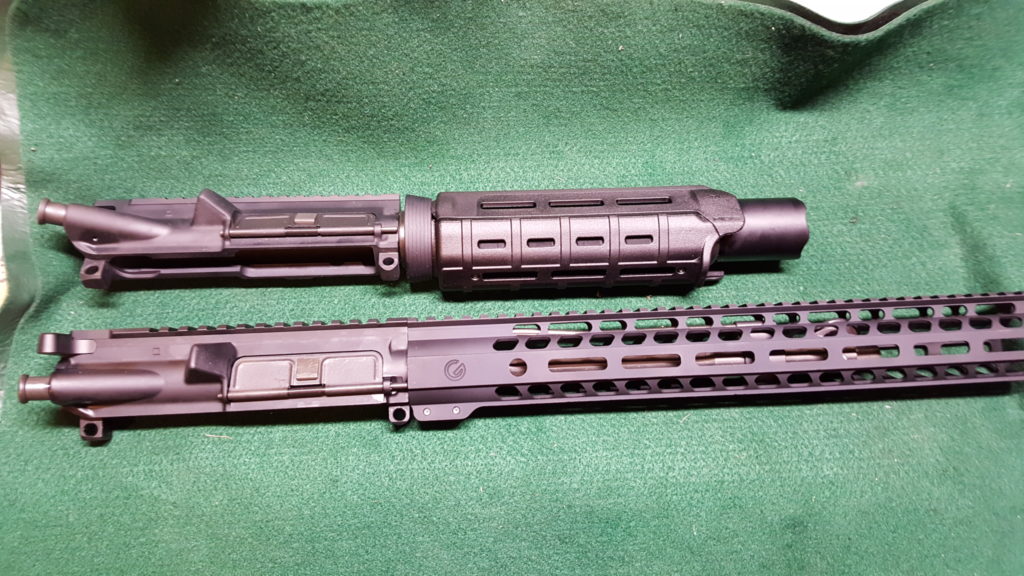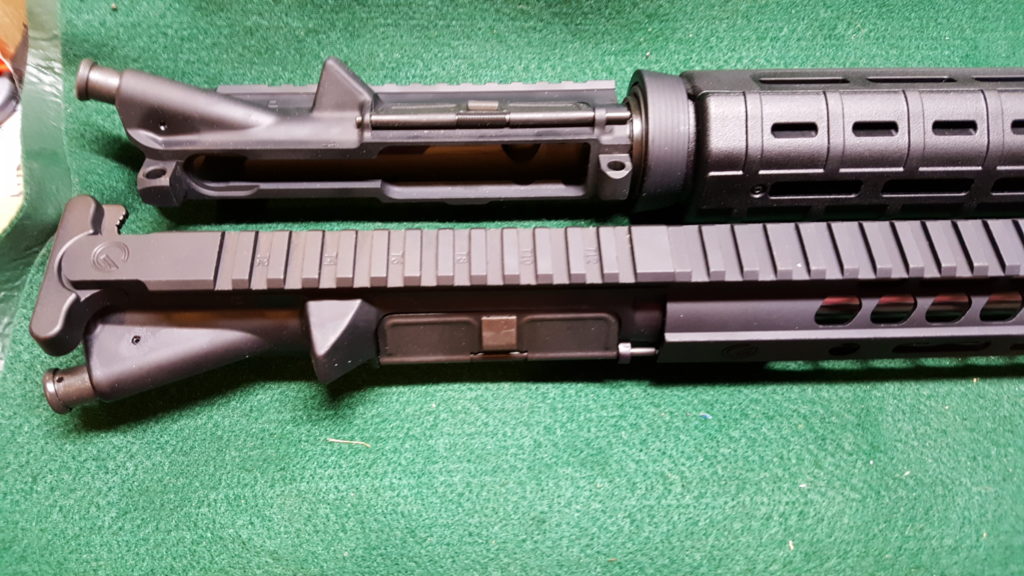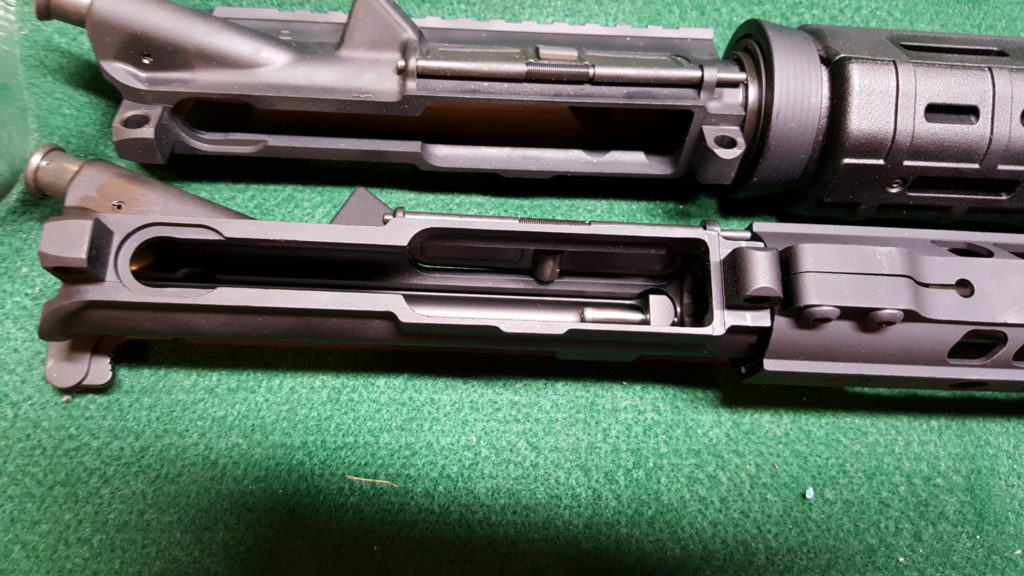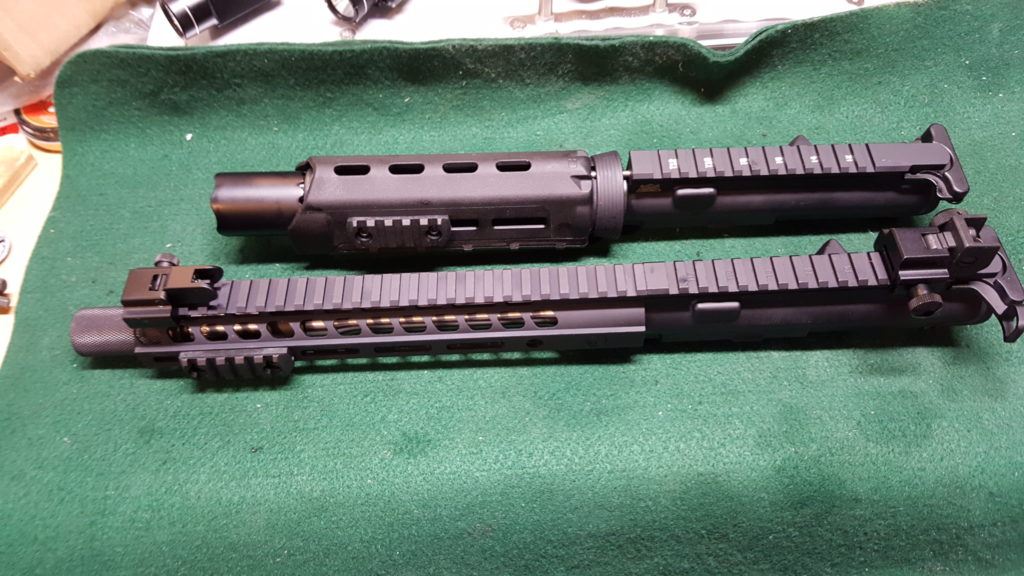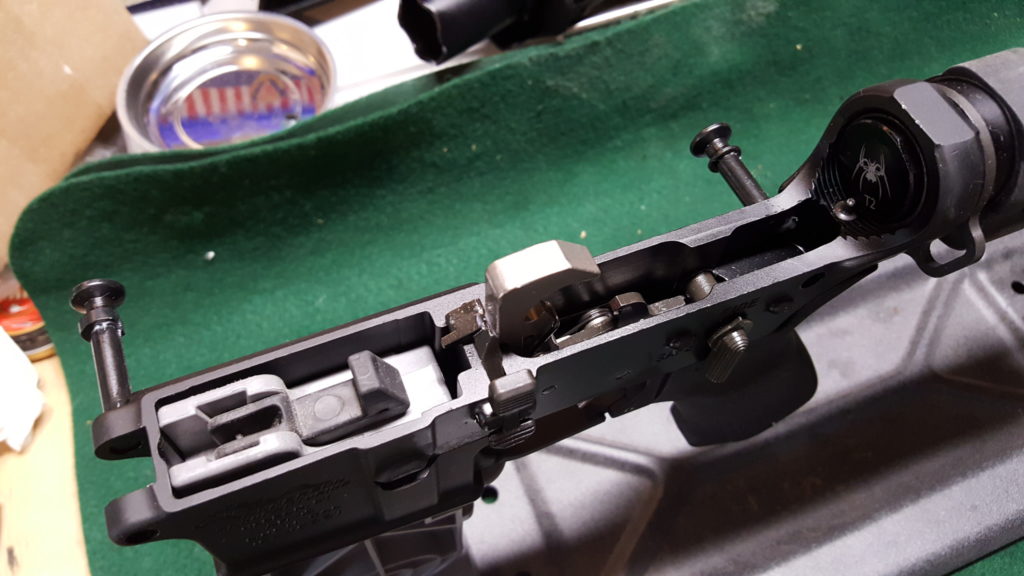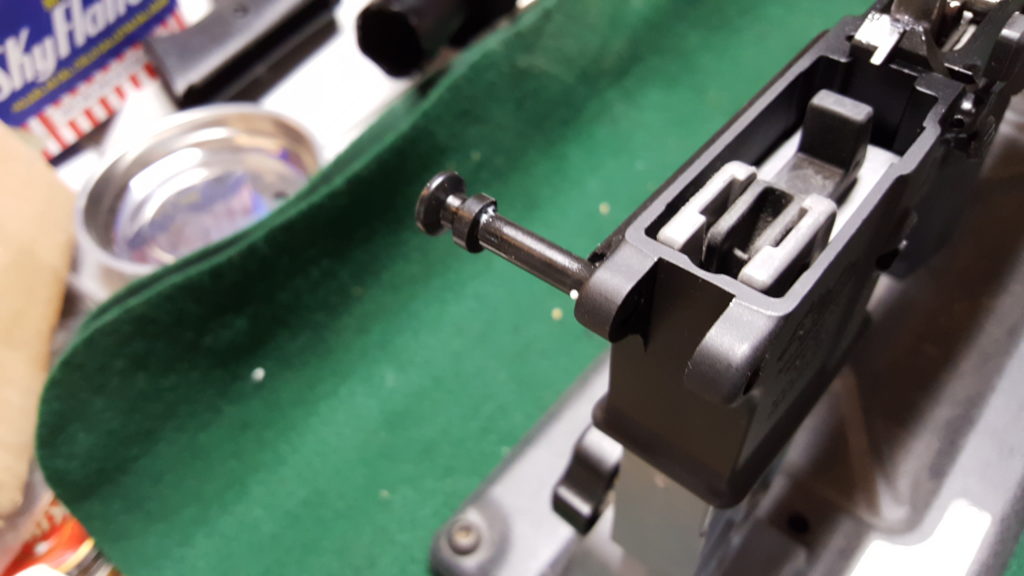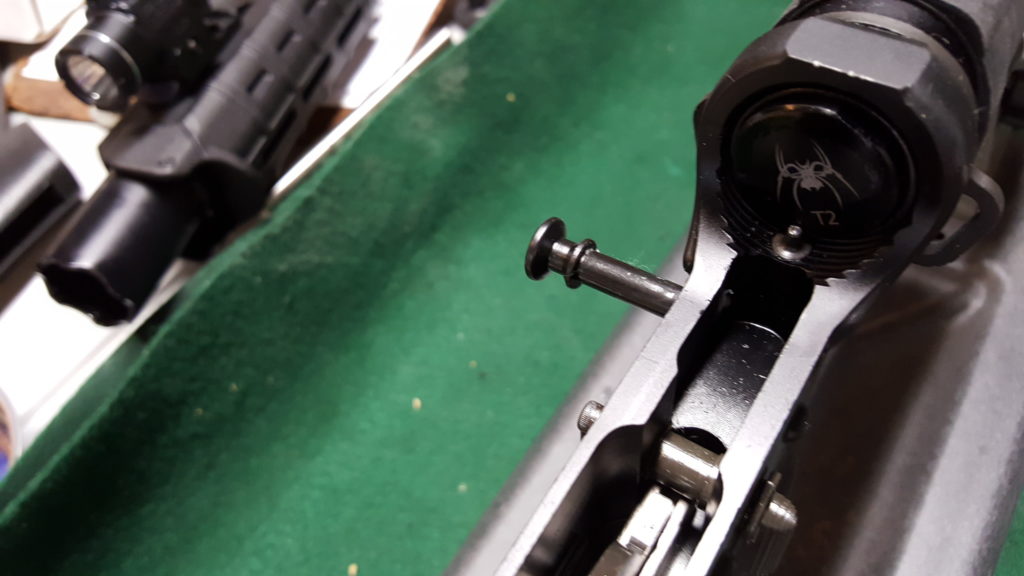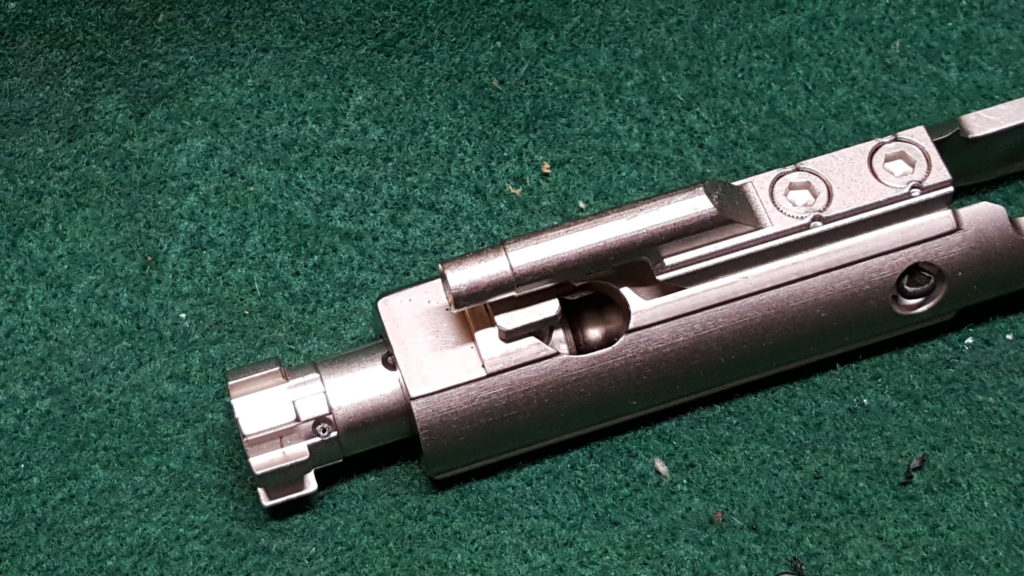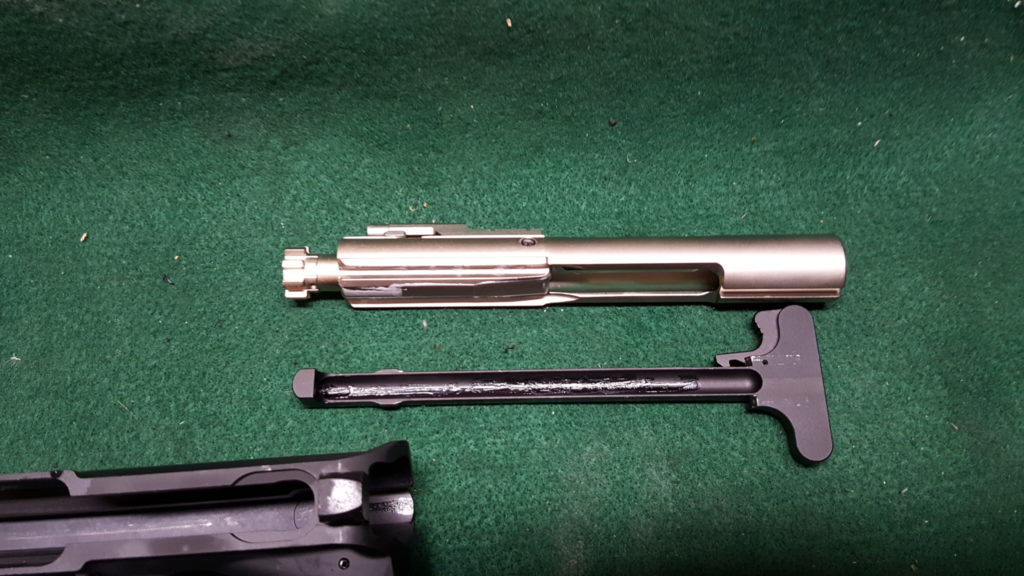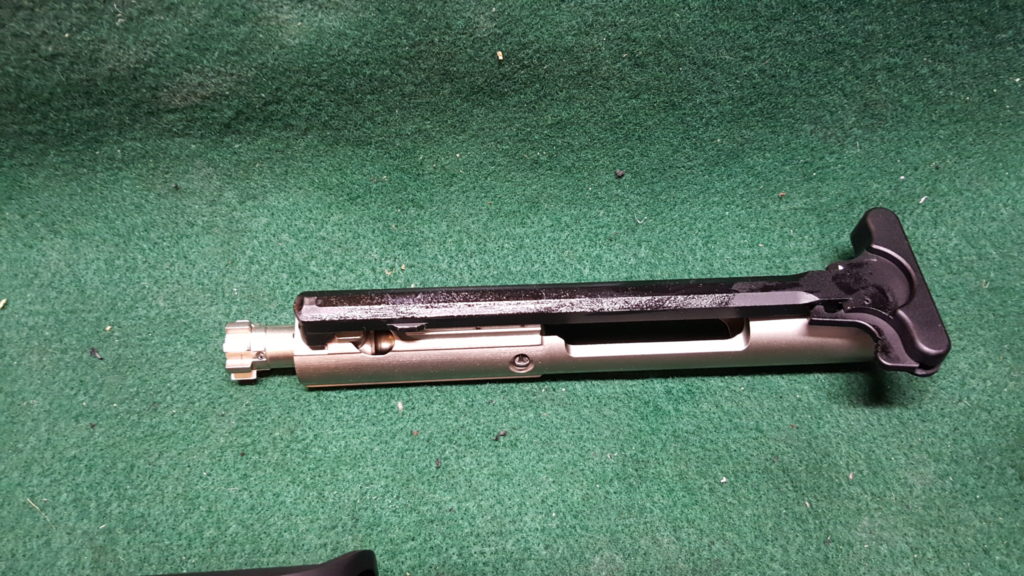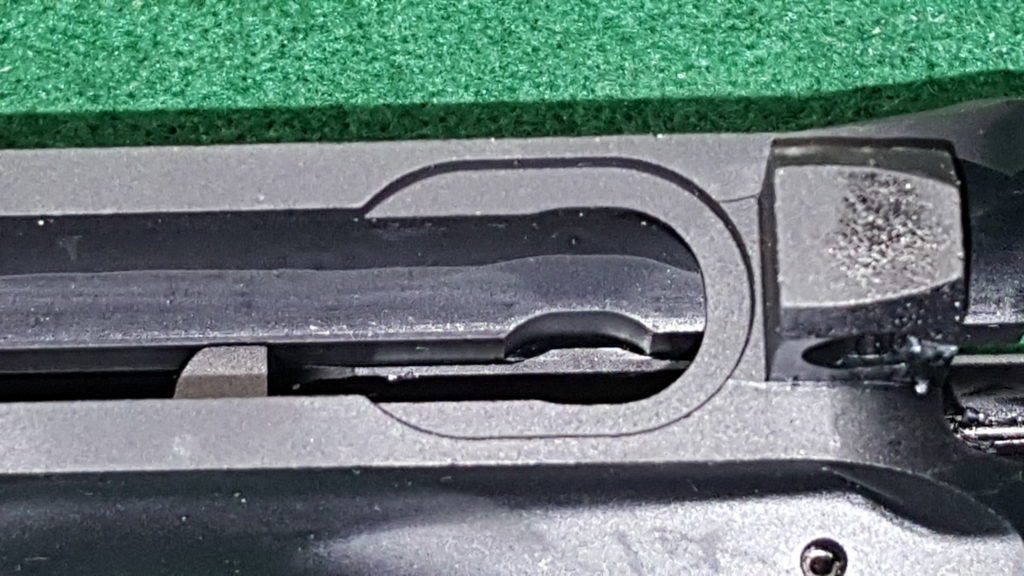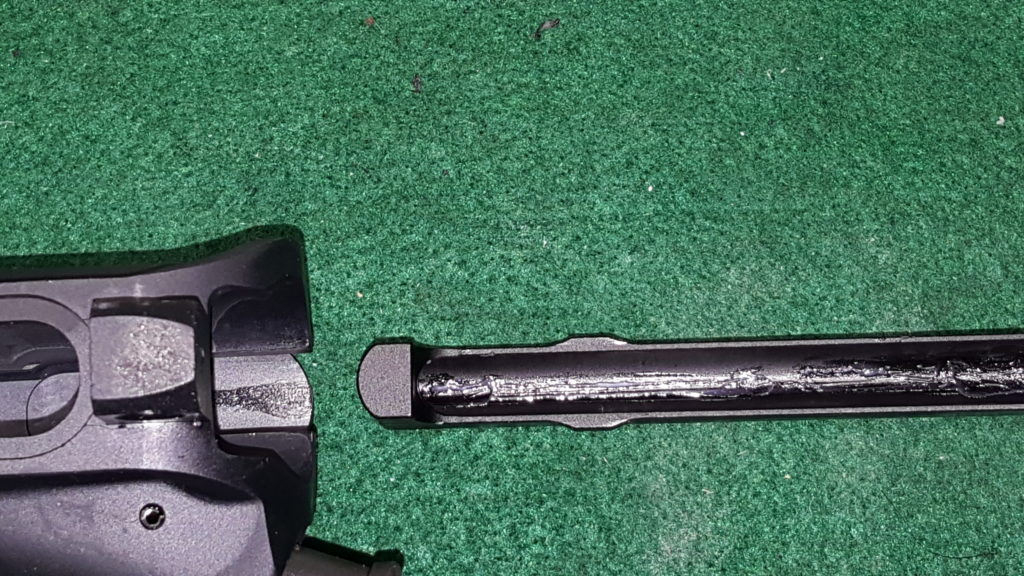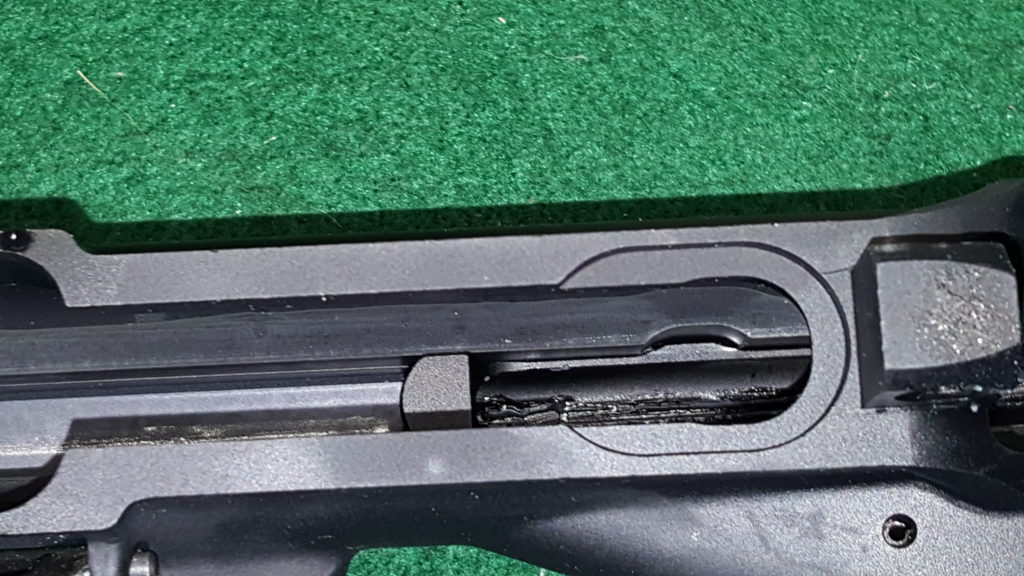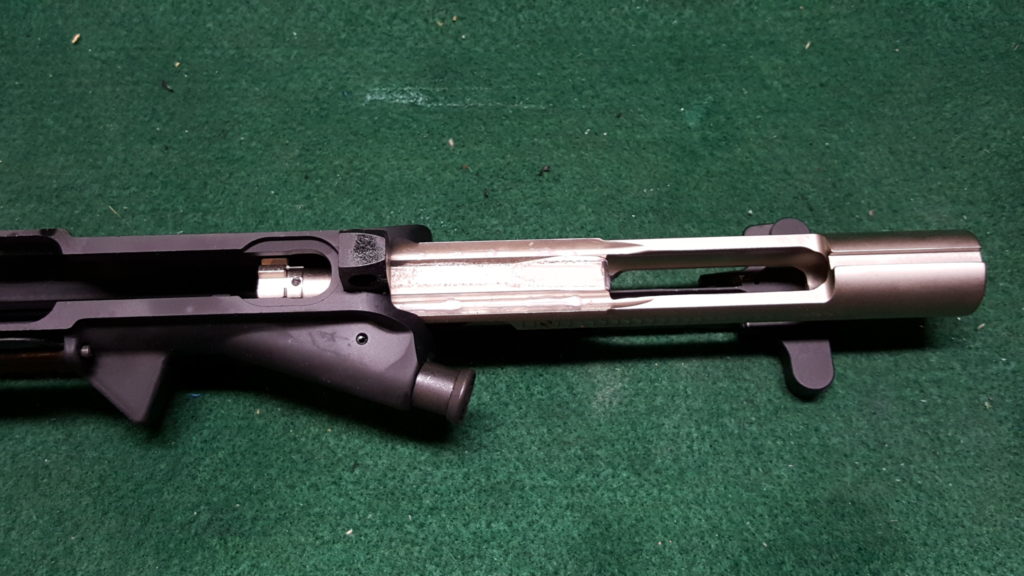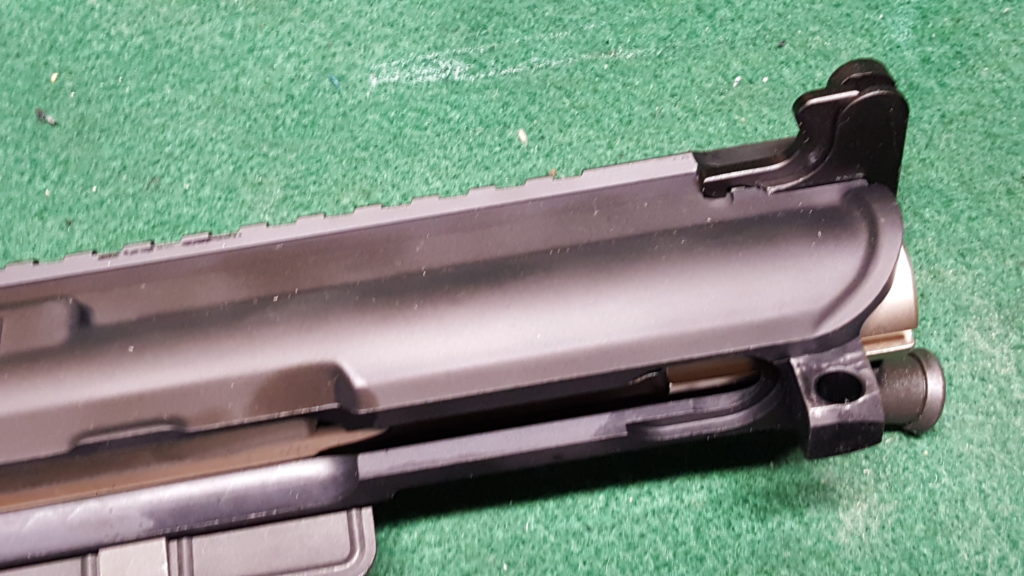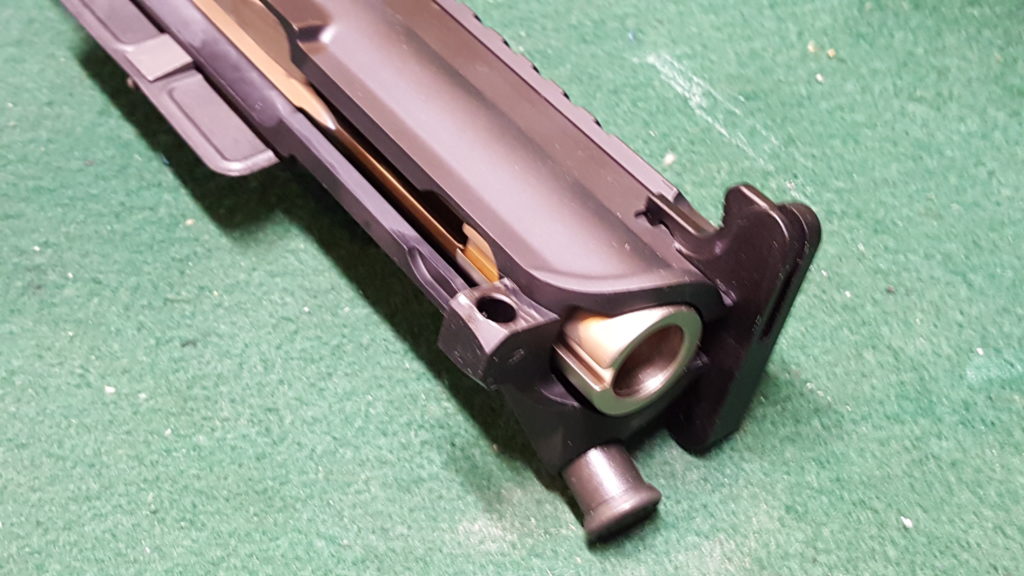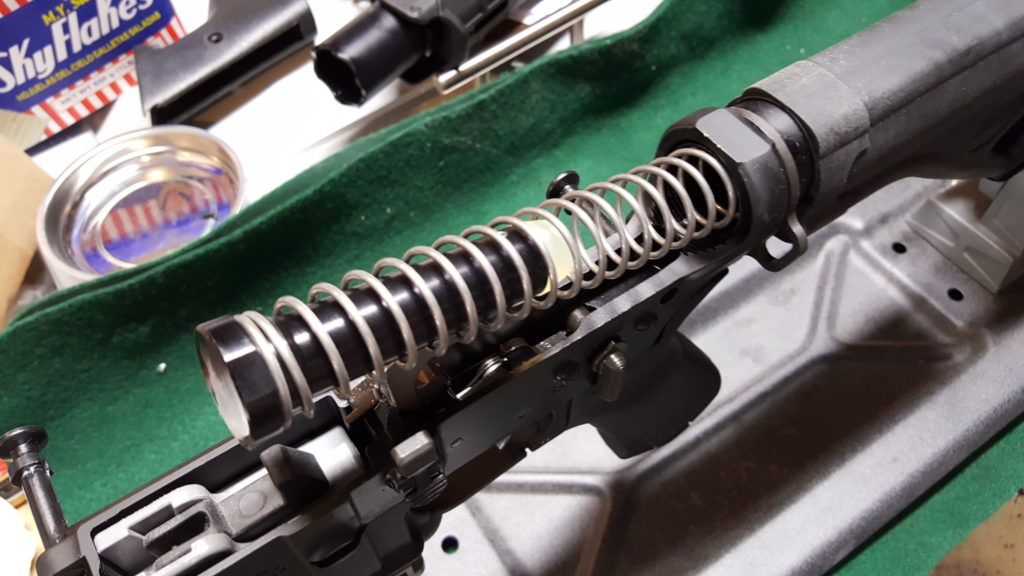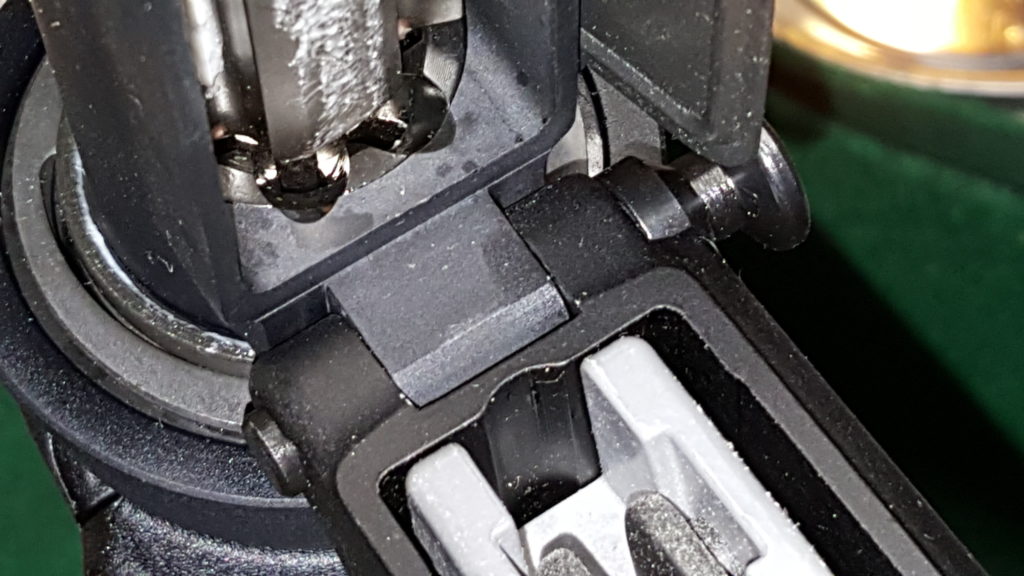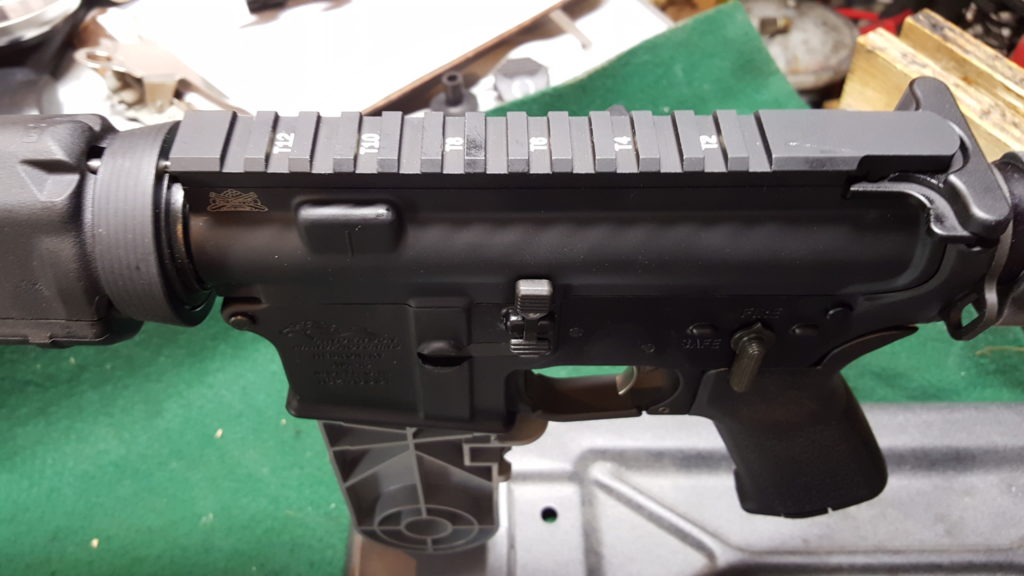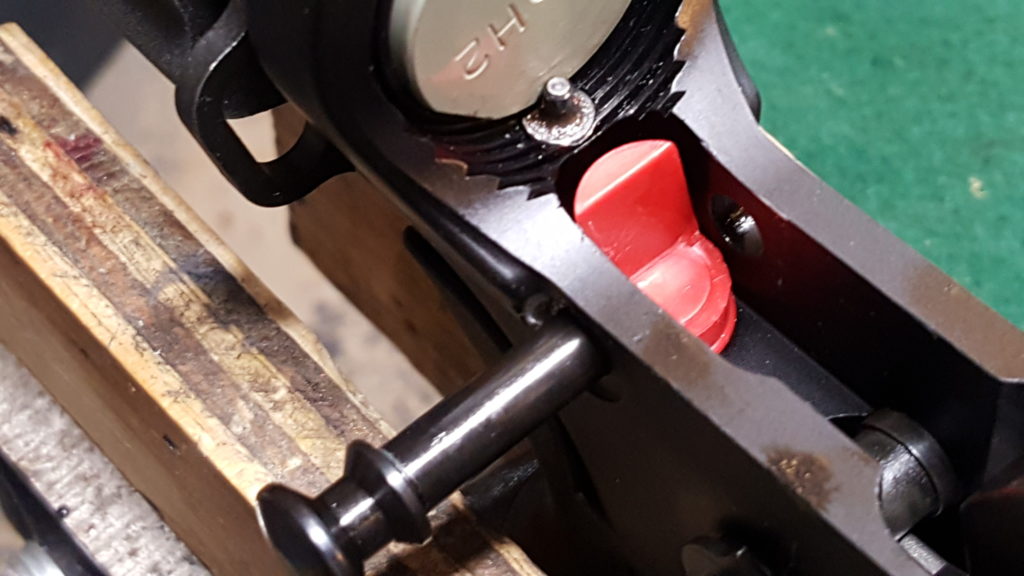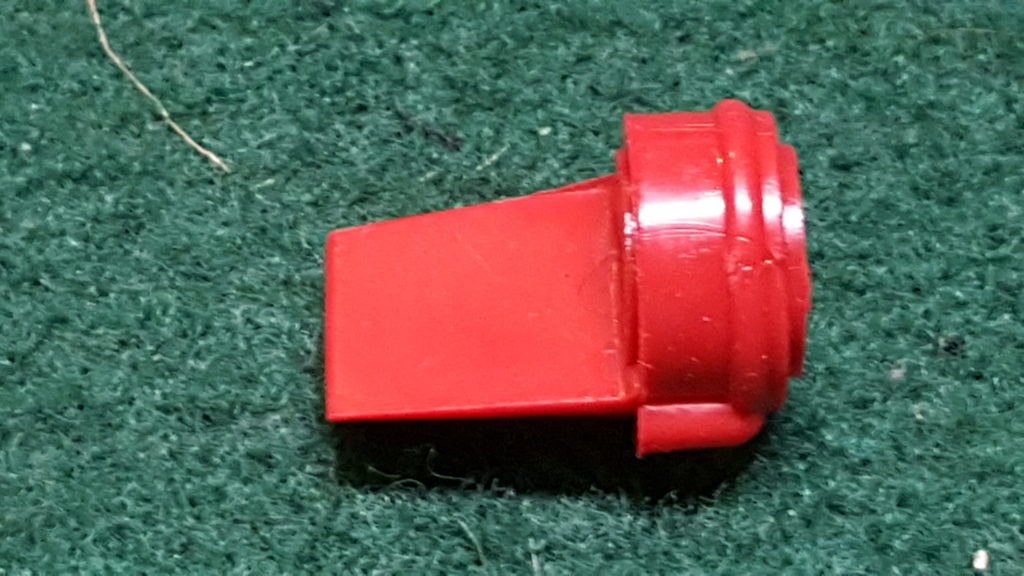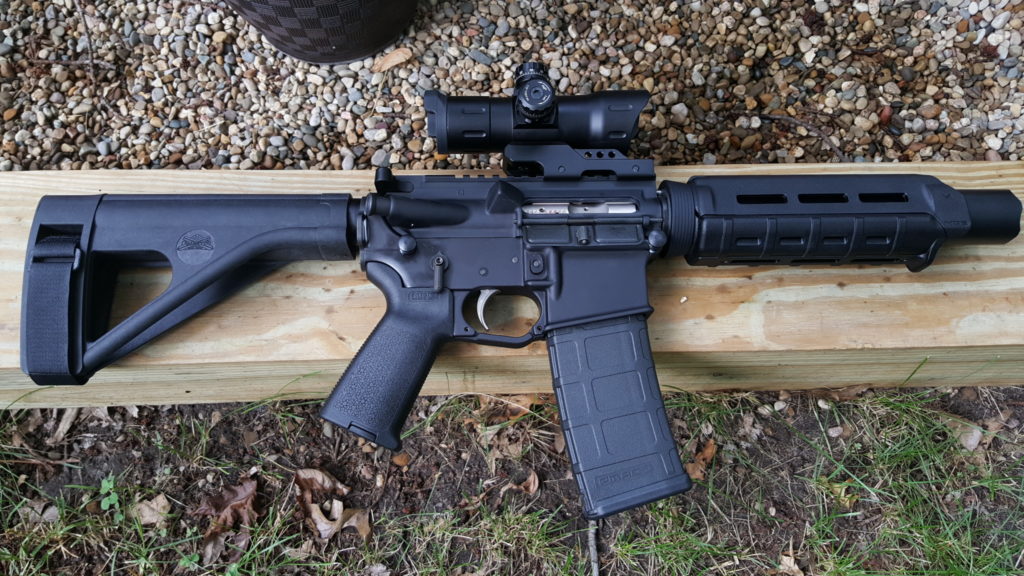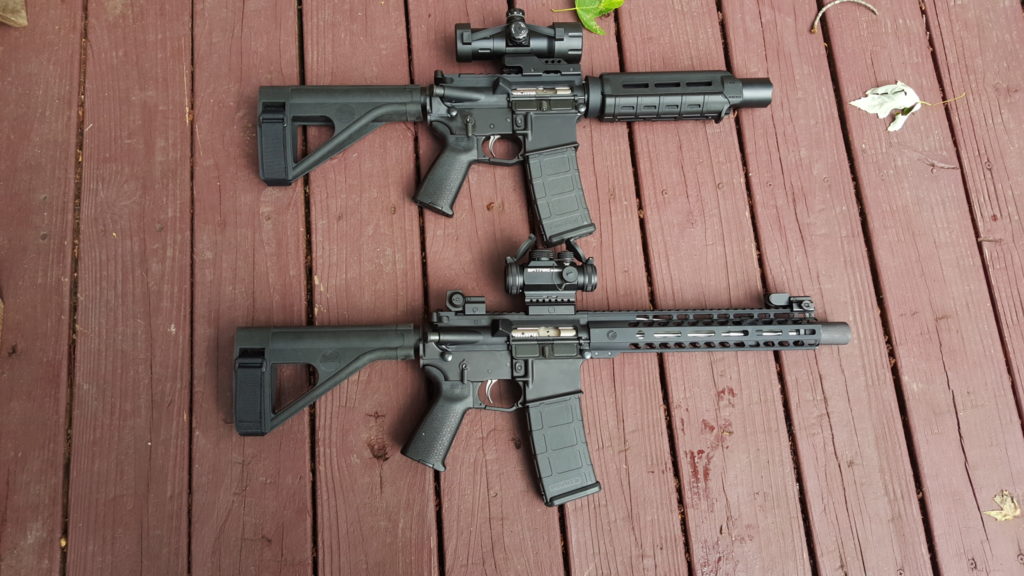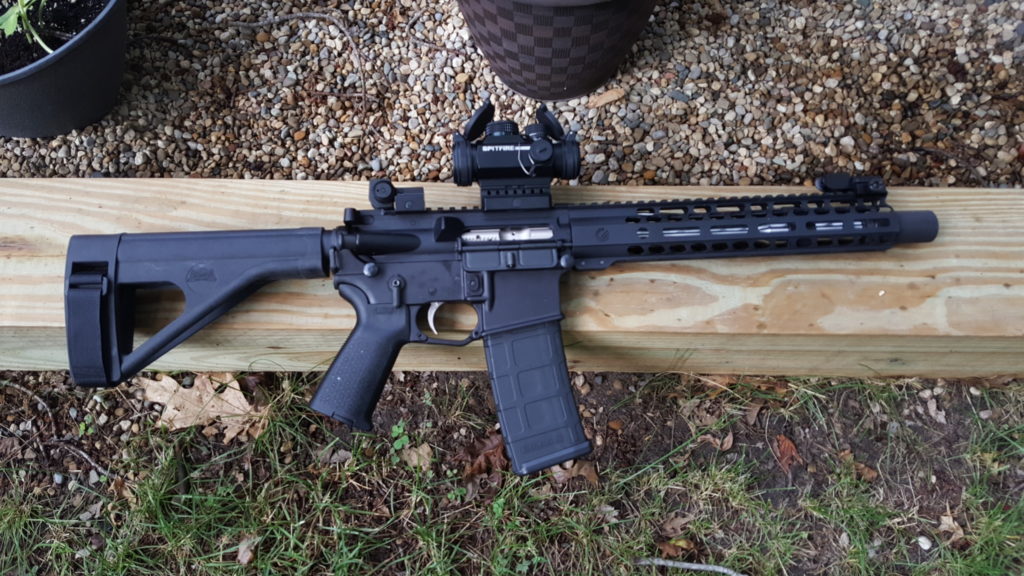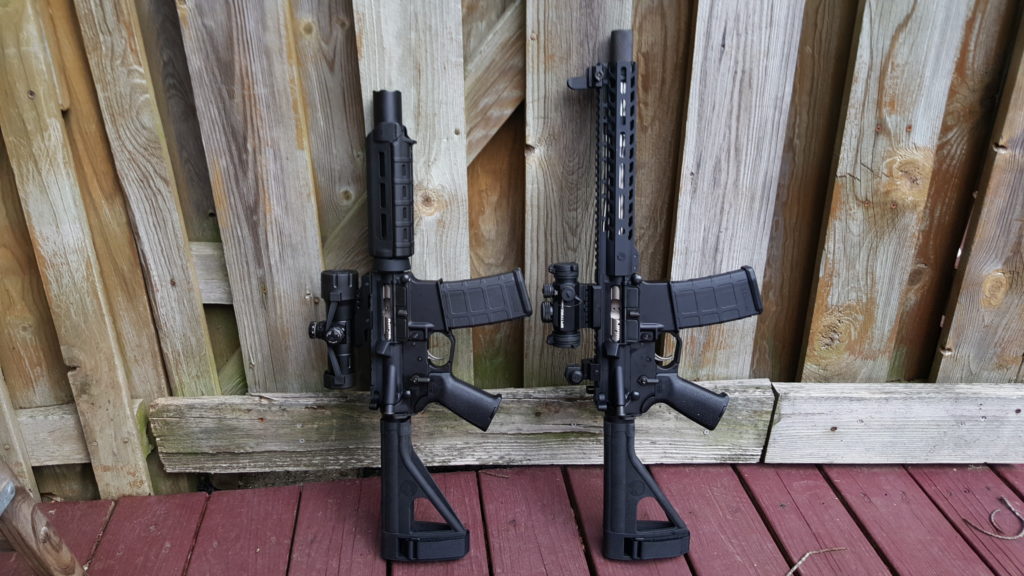ARs are a fun, quick build and because they are modular you can take them in a ton of custom directions. When you build an AR, you need to first ask yourself “what am I going to use this for?” and then plan your components accordingly. In this case, I wanted a 16″ carbine that was relatively light, chambered in 5.56 and had an optic for short to medium ranges. In some ways you could say my plan was to build a tactical style rifle.
So, let me explain the components used and why I selected them:
- At the heart of the AR is the receiver and I tend to use Anderson. They are Mil-Spec, inexpensive and well finished. In short, I’ve never had a problem with them and I don’t know anyone else who has either.
- I like PSA’s lower build kits as a starting point for all the internals. Sometimes I have left overs depending on what all I upgrade but even their based build kits is solid.
- The fire control group (FCG) is PSA’s enhanced set meaning the trigger and hammer are Nickel Boron (NiB) coated for lubricity and ease of cleaning. In general, PSA already has some of the best feeling triggers out there in terms of the Mil-Spec out-of-the-box AR triggers. The Enhanced set feels a tad slicker but still falls in the 5.5-6.5# pull range.
- The grip is a Magpul MOE.
- The butt stock is a Magpul STR. I like the Magpul stocks that clamp in place – they are rock solid. The STR can do this and has a great angled top for a solid cheekweld.
- It has a Spikes H2 buffer to soften the operation up a bit.
- I like Yankee Hill Machine’s (YHM’s) oversize pivot and takedown pins and get them from Brownells.
- The selector lever is PSA’s ambidextrous model. To be honest, I’m going to stop getting the ambidextrous selectors – the capability sounds great in theory but what I find is that I am so used to the traditional selector lever that I rarely use the operating-side lever.
- The slide release lever is a GIANT Wilson. I bought it sight unseen via Brownells and had no idea it was going to be this big. On the plus side, it sure is easy to find and operate. On the con side, it is big and kind of fugly if you ask me. My go to release lever these days are the Strike Industries models. By the way, if you use the Wilson, be sure to apply Loc-Tite to the set screw that locks the paddle in place or it will loosen up.
- The upper is a 16″ Palmetto State Armory with a 5.56 M4 profile barrel with a 1:7 twist hidden under their cool slim Keymod handguard. Honestly, I think PSA makes great uppers. They are running a budget operation and you may have to wait to hear from their customer service department but I have never actually had an upper from them have a problem. They’ve missed a part in parts kits before but always moved fast to ship me a replacement part. By the way, PSA also soures some really barrels, that is one of the big reasons I use their uppers.
- The bolt carrier group is a Nickel Boron (NiB) coated assembly from Fail Zero. Boy are they slick. In general NiB BCGs are cool – you can feel they slide easily without a gritty feeling and clean easily. With Fail Zero you are buying experience – they know BCGs and they pioneered the very slick polished NiB process they call “EXO Nickel Boron”. I’ve not had the coating flake on me and it is slick.
- The charging handle is VLTOR/BCM Mod.3 with the large handle. I like the oversized handle both for working around optics and it is really easy to find and operate. This is my preferred charging handle and has never let me down. Beware of the cheap import ambidextrous knock off handles. You will get what you pay for. Stick with name brand.
- For magazines, I like MagPul.
- The optic is a Vortex Crossfire II 1-4×24. In general, Vortex scopes are excellent and they have a no-nonsense “if it breaks we will fix it” warranty that you can’t beat.
- The offset scope mount is a generic unit sold by TMS. It’s my third TMS but I now just use Vortex mounts.
- The offset backup sights are something I do now on my rifles with optics. If you have any kind of optics failure you rotate the rifle 45 degrees and use the iron sights. They look awkward but the transition is actually very smooth and fluid. If you haven’t tried this, I’d recommend giving them a whirl. These are surprisingly inexpensive ADE brand sights and they’ve held up just fine. This is my third set from them via Amazon.
- The light is a test unit. The light itself is a LiteXpress X-FIRE1 LED unit that is sold on Amazon. The mount is from them also and is the only part I am not too keen on as it flexes. They do have a new model now so I am not sure how the mount is. The light itself has held up just fine.
Here are some photos for you of the rifle:
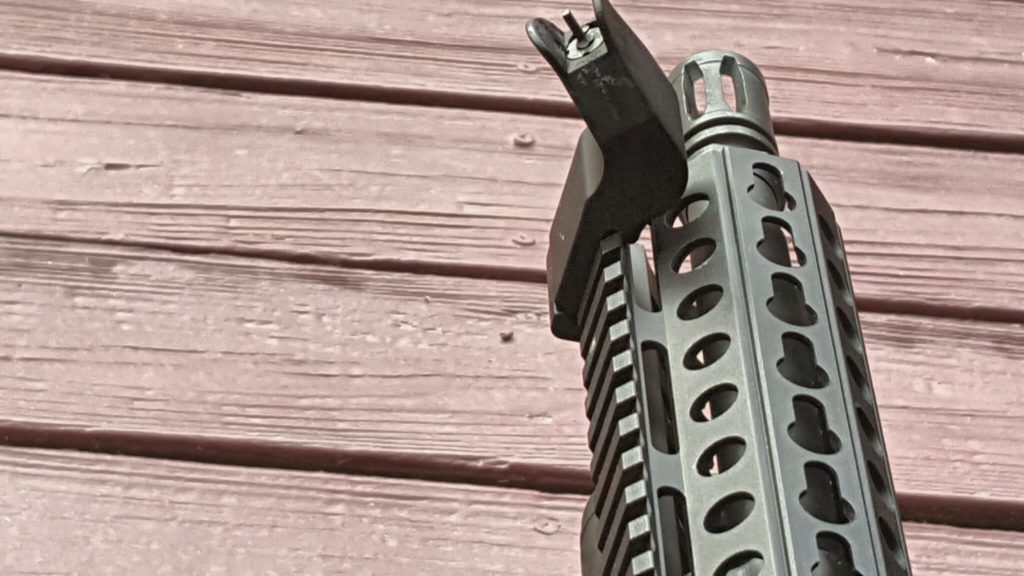
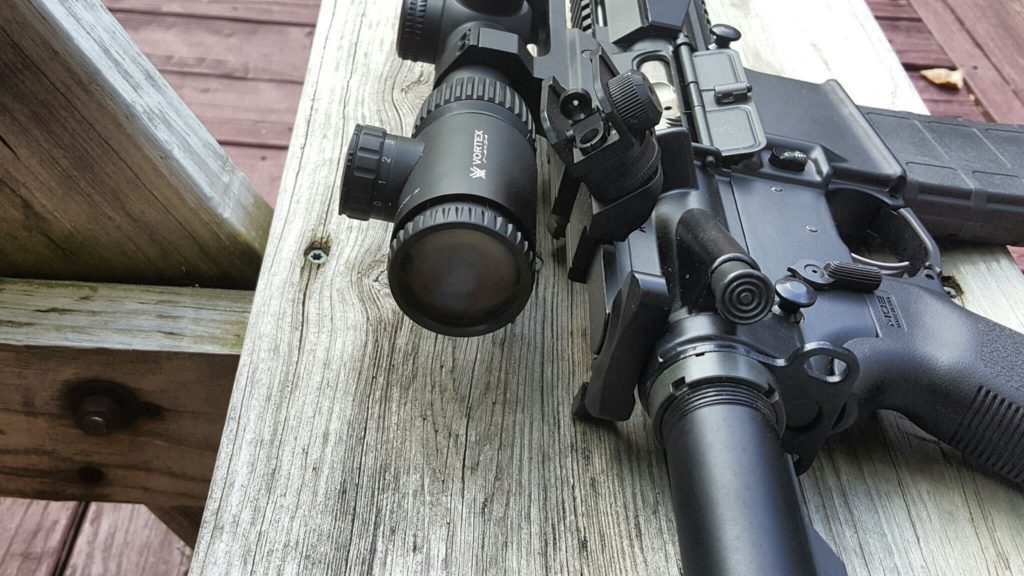
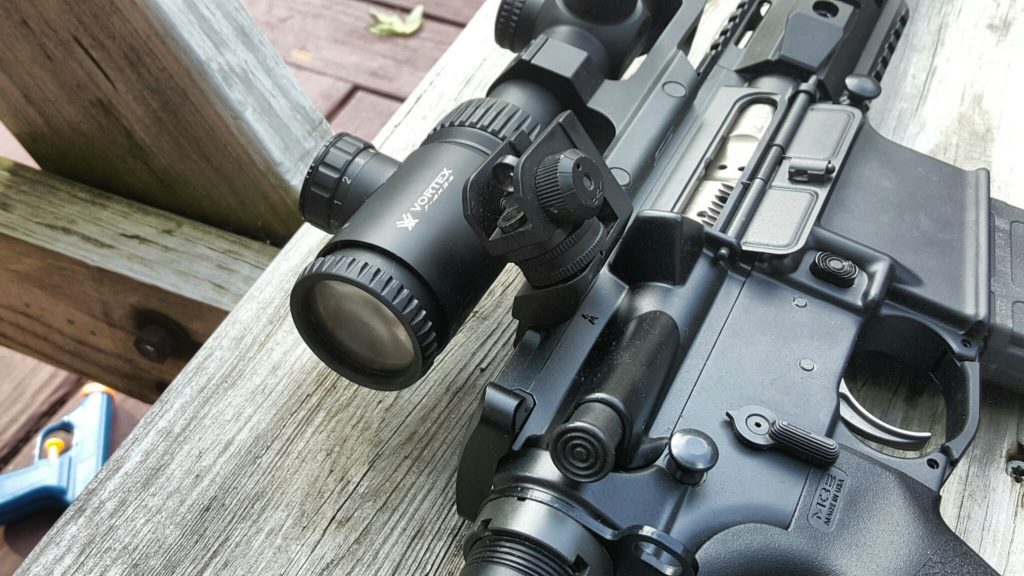
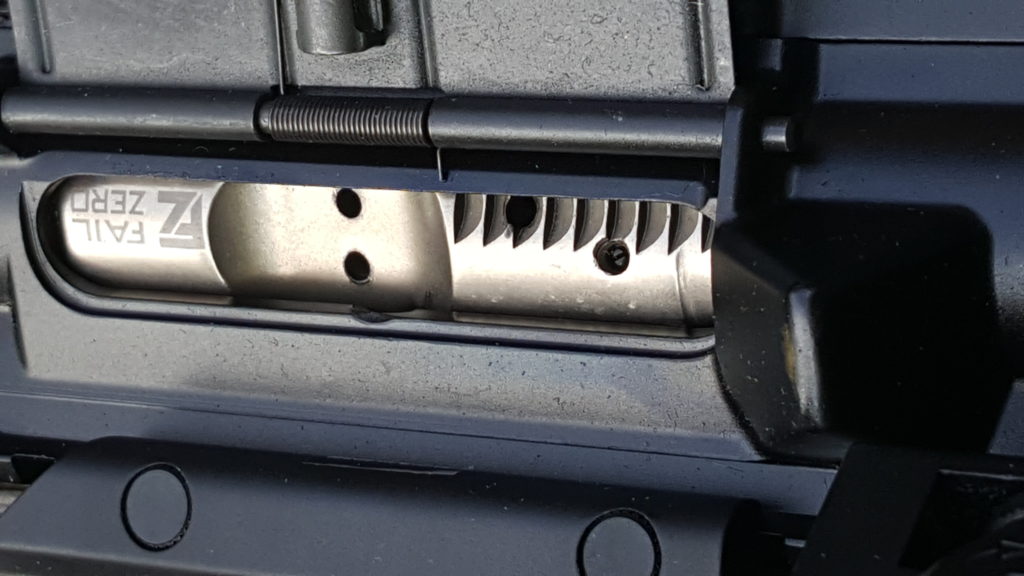
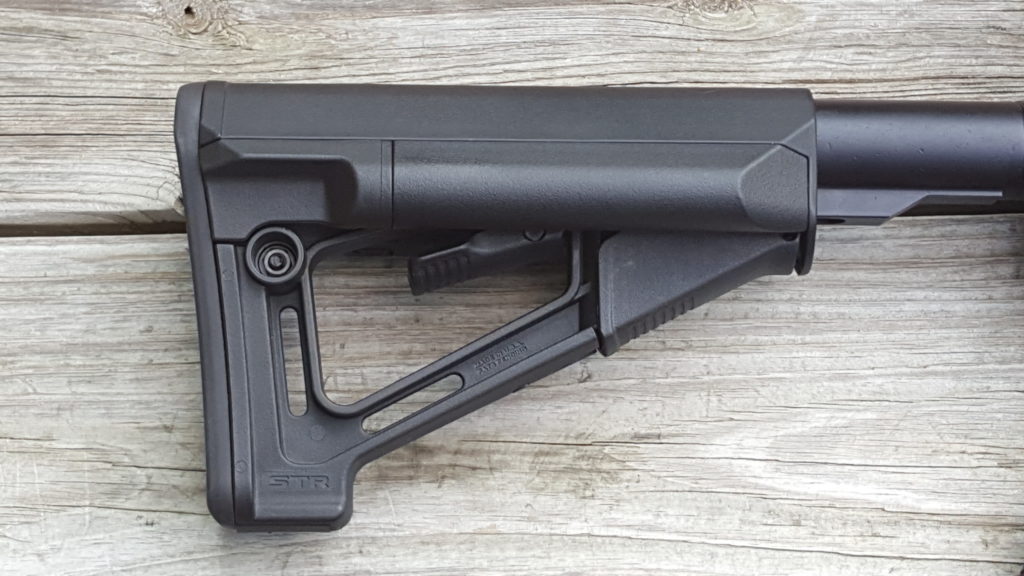
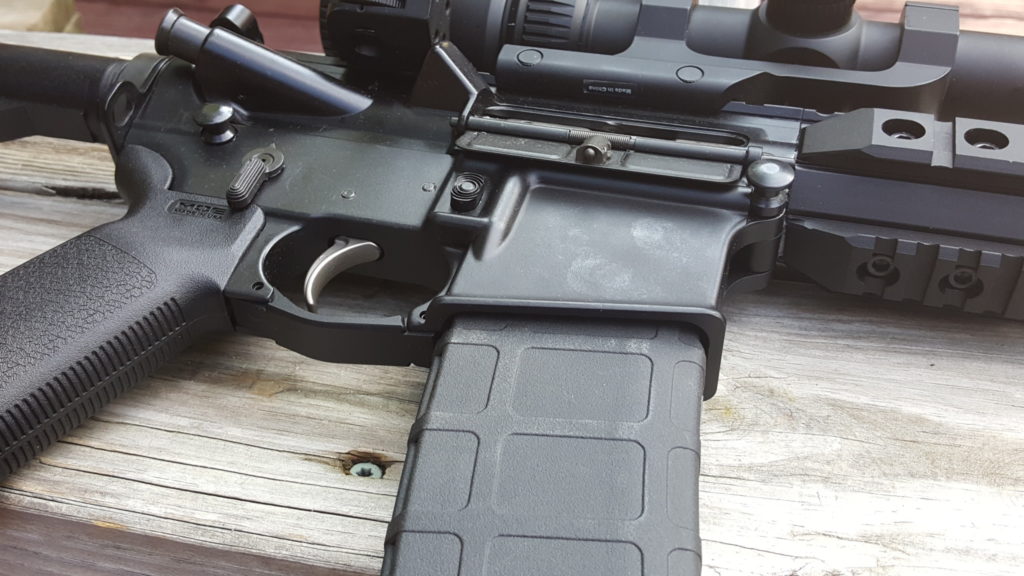
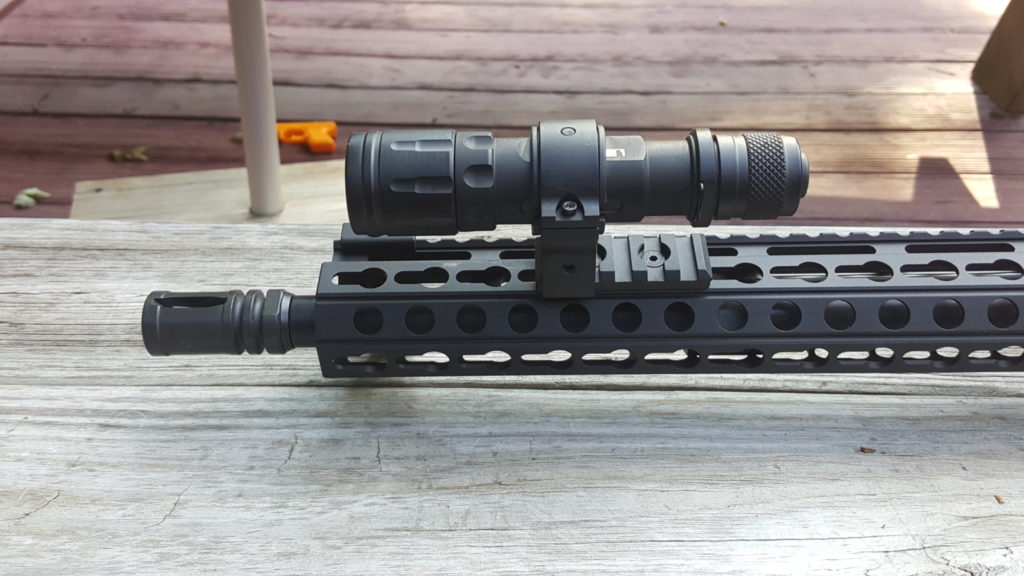
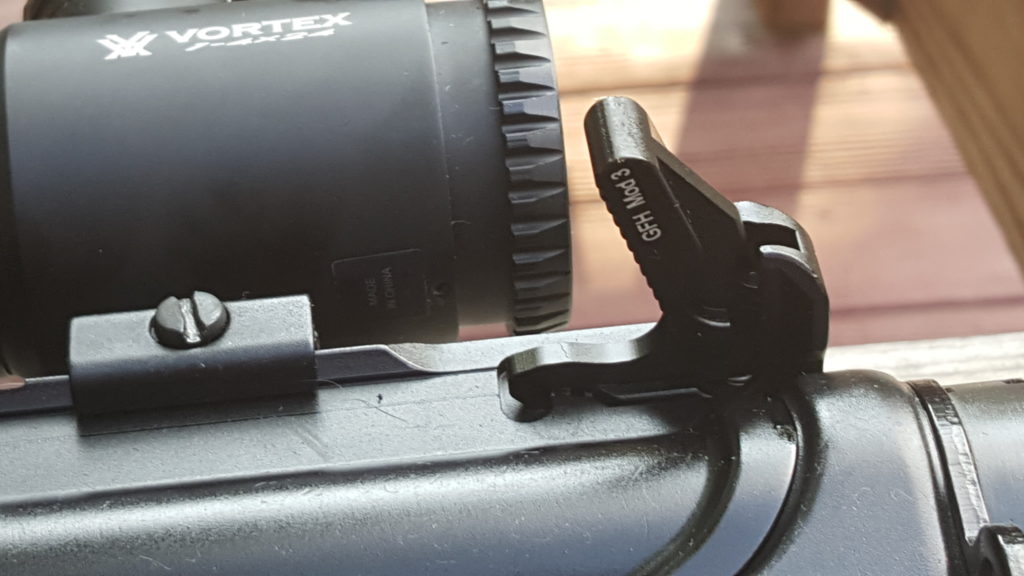
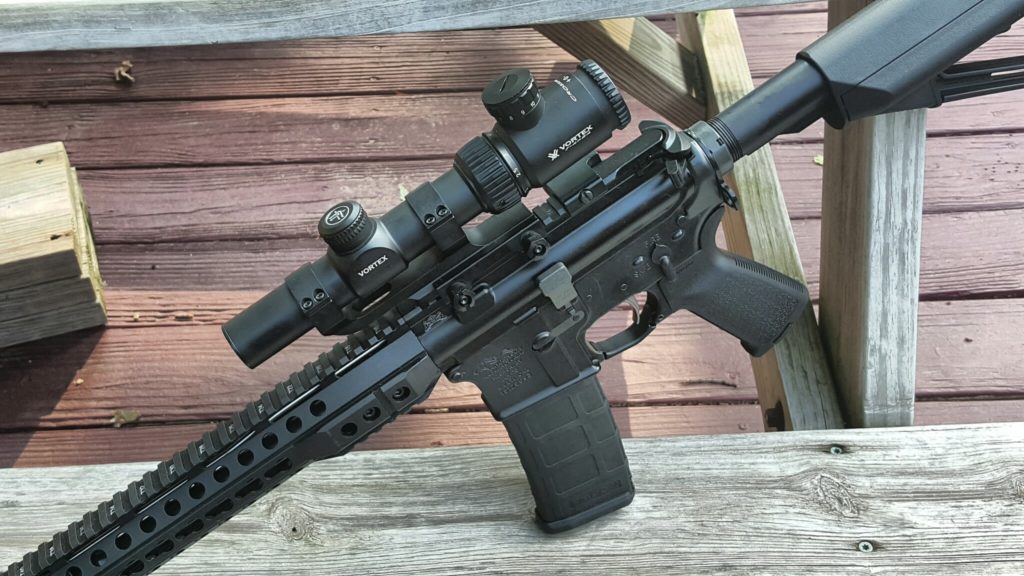
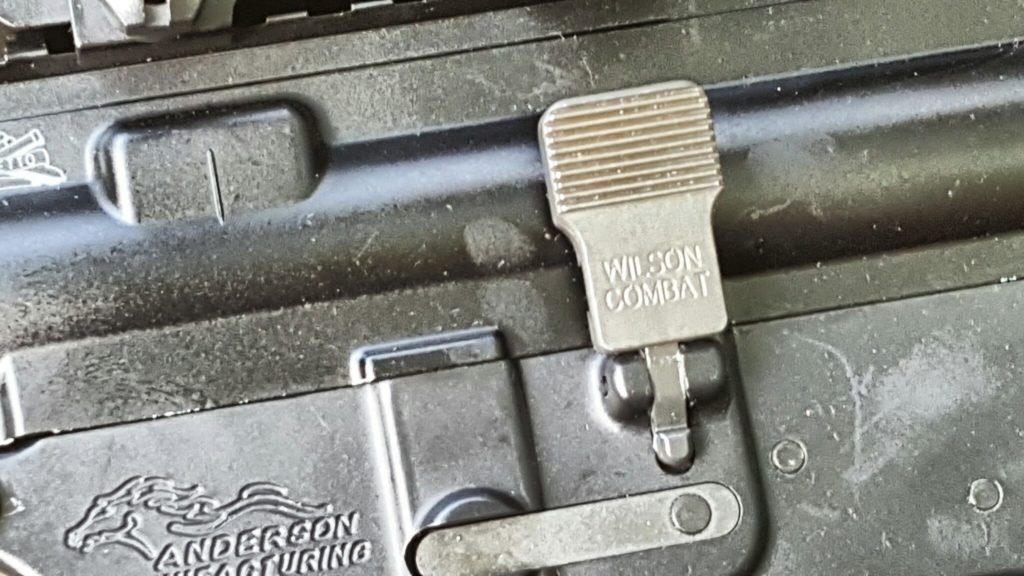
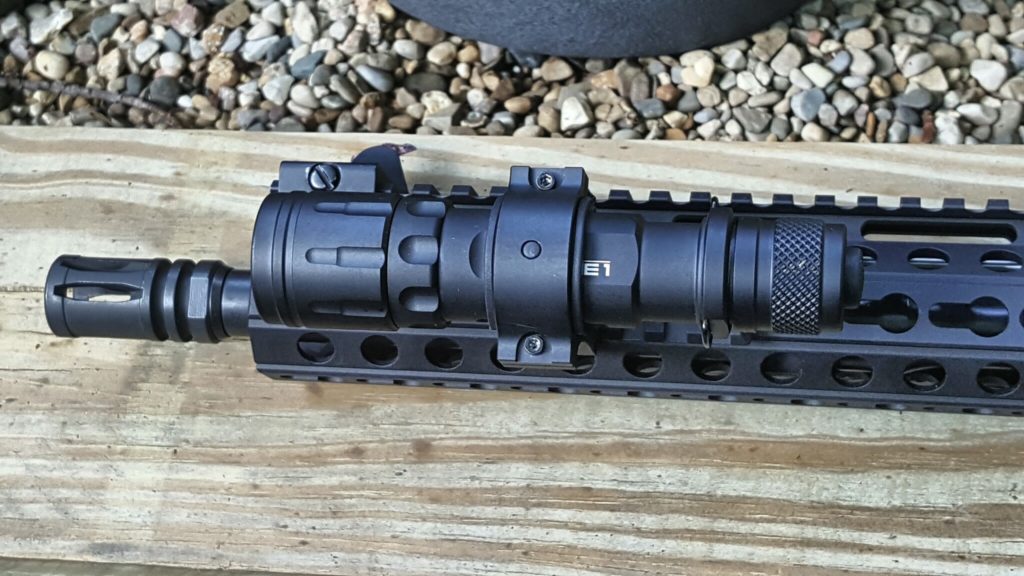
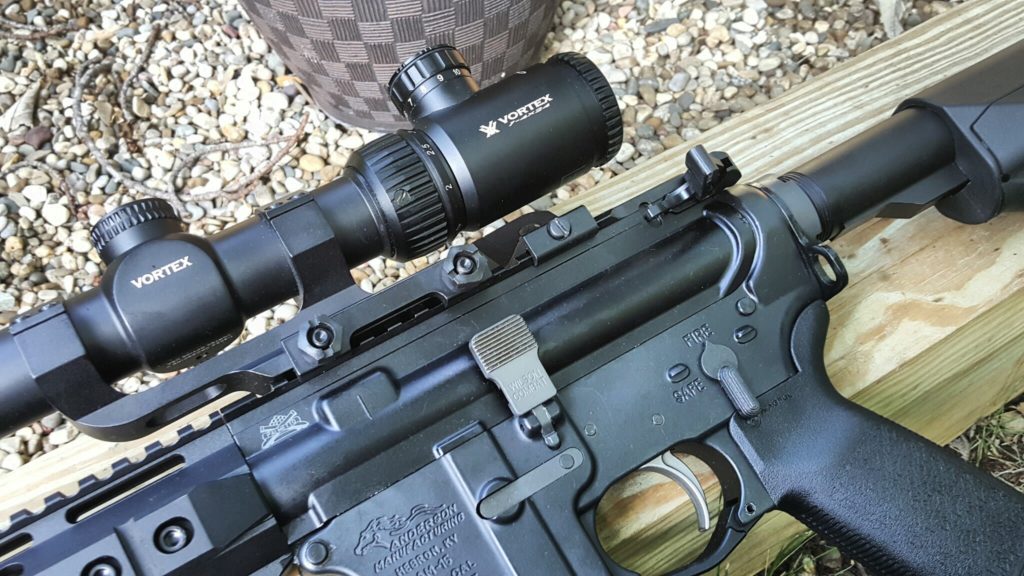
| Palmetto State Armory (PSA) has an incredible selection of AR-15 kits to meet a wide range of requirements. Click here to go to their main AR-15 kit page. |
Summary
You can build an AR-15 in an amazing number of different ways. There are so many options out there. Helping you get started, PSA has a huge variety of kits you can select from. They’ve always worked great for me.
If you find this post useful, please share the link on Facebook, with your friends, etc. Your support is much appreciated and if you have any feedback, please email me at in**@*********ps.com. Please note that for links to other websites, we are only paid if there is an affiliate program such as Avantlink, Impact, Amazon and eBay and only if you purchase something. If you’d like to directly contribute towards our continued reporting, please visit our funding page.


